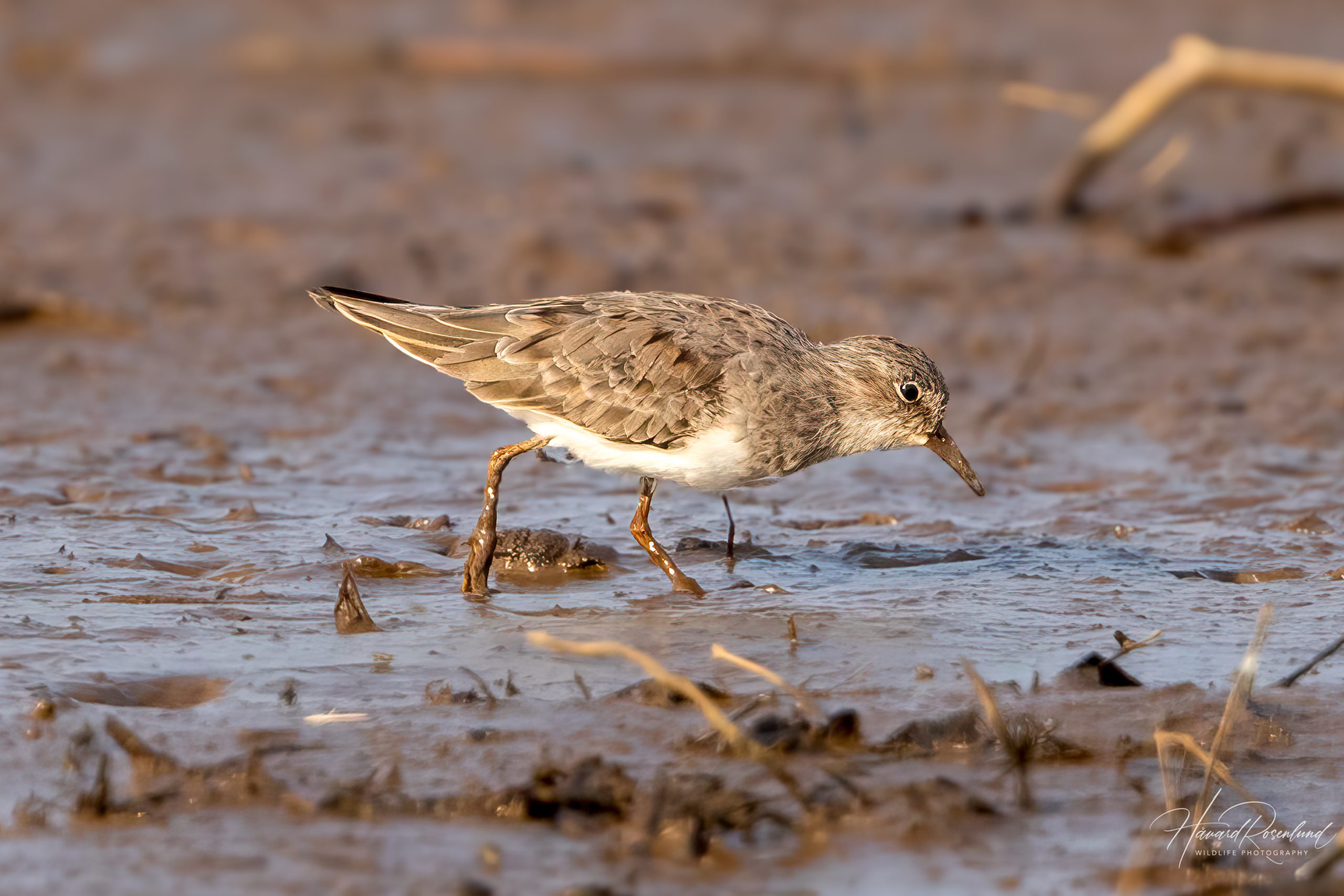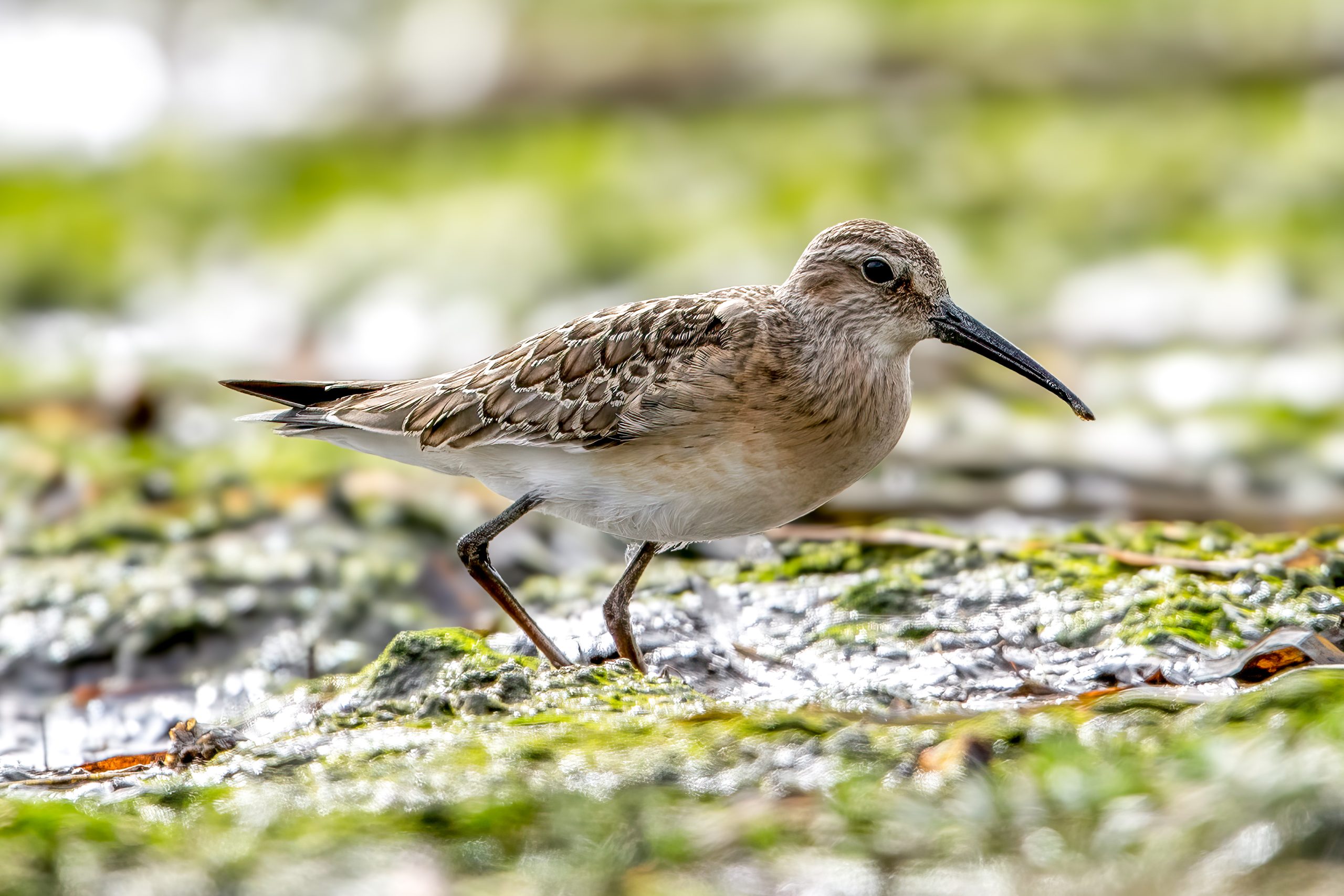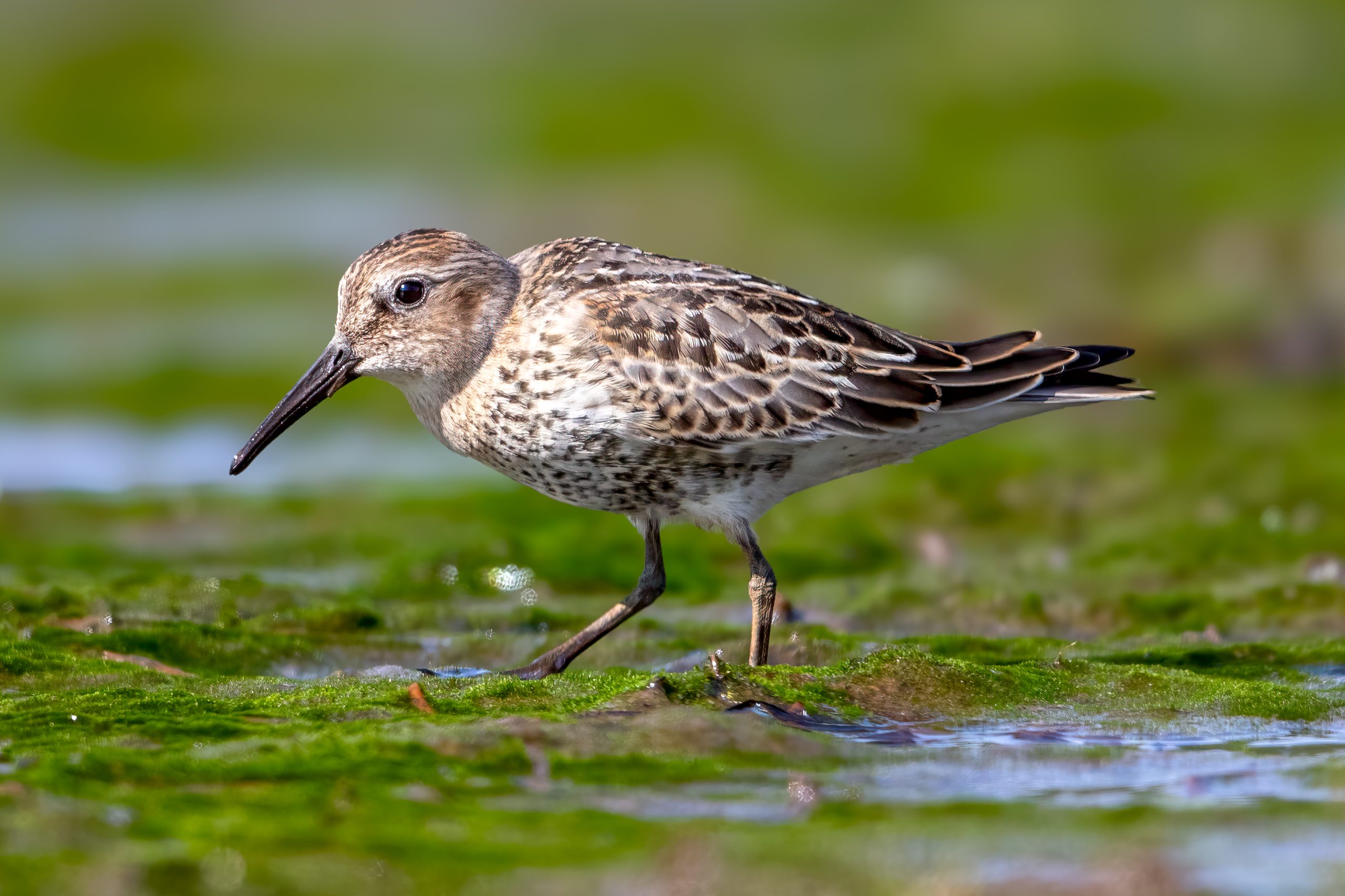Description
The Temminck’s stint (Calidris temminckii) is a small wader in the sandpiper family that breeds in the northern regions of Europe and Asia, spanning from Scandinavia to Siberia. During winter, it migrates to tropical regions, including Africa and South Asia. It measures about 13-15 cm (5.1-5.9 in) in length with a wingspan of 34-37 cm (13.4-14.5 in). This bird is notable for its short, straight bill and short legs, which are yellowish or greenish. The upperparts are brownish-grey with darker streaks, while the underparts are predominantly white. During the breeding season, adults exhibit a browner plumage with a more pronounced pattern of darker patches.
The Temminck’s stint is similar in size and appearance to the little stint (Calidris minuta), but can be distinguished from this species by its more muted coloration and less conspicuous white braces on the back. Additionally, the little stint’s legs are black and typically longer.
Diet & habitat
Temminck’s stint inhabits a variety of wetland environments, such as marshes, riverbanks, lake shores, and coastal mudflats. It prefers areas with abundant vegetation and soft substrates that support its feeding habits. The diet consists primarily of small invertebrates, including insects, crustaceans, and mollusks. It employs a methodical feeding strategy, probing and picking at the substrate with its bill to extract prey. It often feeds in shallow water or on muddy grounds, walking slowly and deliberately as it searches for food. Unlike many other waders, Temminck’s stint often forages alone or in small groups, rather than large flocks.
Migration
Temminck’s stints are long-distance migrants and travel from their breeding grounds in the high Arctic regions to their wintering habitats in Africa, the Indian subcontinent, and Southeast Asia. The migration occurs in two main phases: a southward movement post-breeding in late summer and early autumn, and a northward return in spring. They undertake these long migrations in stages, stopping at various suitable wetland sites along the way to rest and refuel. The timing and routes can vary significantly depending on weather conditions and food availability.
Nesting
Breeding for the Temminck’s stint occurs in the tundra and taiga zones during the brief Arctic summer. The breeding season typically starts in June. They are ground nesters, with the female laying a clutch of 3-4 eggs in a simple scrape on the ground, often lined with plant material. The eggs are incubated by both parents for about 19-21 days. After hatching, the chicks are precocial and leave the nest shortly after birth, although they remain under the care of their parents. The fledging period lasts around 20-25 days, during which the chicks grow rapidly and develop the ability to fly.
Status
The Temminck’s stint is currently listed as least concern by the IUCN Red List, indicating that the species does not face any immediate threat of extinction. However, habitat degradation and loss, especially in their wintering grounds, pose potential risks to their population. Conservation efforts focused on preserving wetland habitats are crucial for maintaining healthy populations of this species.







